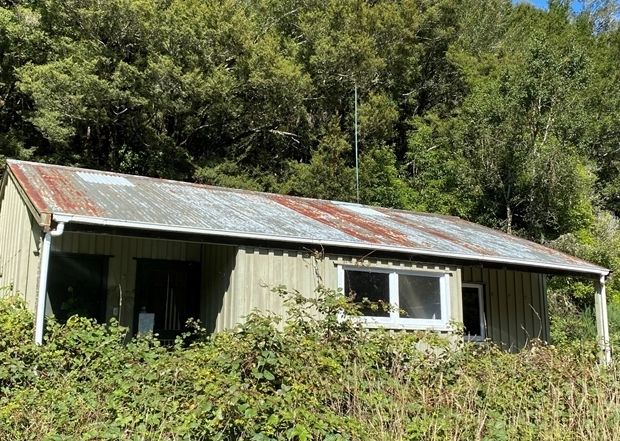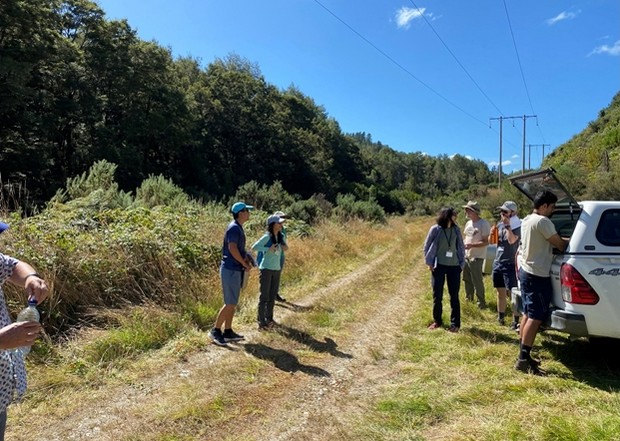Maimai conference and Forest Flows
15 March 2023
Water is a vital taonga for all New Zealanders. Climate change and land-use intensification are increasingly putting our water resources under pressure. Scion’s Forest Flows research programme is investigating how we can create and maintain water-resilient landscapes to provide beneficial outcomes for all New Zealanders. The programme is now entering its fourth year, with initial results starting to become available. Data analysis is the current focus and Scion scientists are continuing to engage with various iwi, landowners, local councils and other interested community groups to gauge what outcomes are of particular interest.
Forest hydrology was previously a focus of research in New Zealand over 40 years ago and although that research provided valuable learnings at the time, that knowledge is not able to answer today’s questions about planted forests and water. Forest Flows research ultimately aims to answer three main questions: Where is the water? Where is it going? And who gets to use it?
Where is the water?
Throughout the country, ten research sites have been set up with state-of-the-art sensor networks that capture millions of data points within a year to answer these key questions. Sensors are recording information on soil moisture, rainfall, stream flow, groundwater, tree growth and water use plus other environmental parameters. The sensors continuously provide real-time data at 5-minute intervals. Once integrated and analysed, this can be used to answer where the water is stored. Other ground and remote sensing measurements completes the picture of water flow right across the catchment.
Where is it going?
Forest Flows programming is creating a digital twin of forest sites that will allow researchers to “look inside” the catchment to model and make accurate predictions of where the water flows. This will be of considerable value for existing and future forests, especially under changing climate conditions.
Who gets to use it?
Codevelopment and collaboration with iwi and other stakeholders is an important activity of the Forest Flows programme. With deeper mātauranga and stakeholder engagement, we can take all the data generated by the programme and provide these insights to support decision making around sustainable and best practice management of our freshwater resources and who gets to use it.
Looking back to the beginning
Scion’s Forest Flows programme leader and senior scientist, Dean Meason, recently attended a field day at the Maimai experimental catchment near Reefton on the West coast. This event, led by the Global Institute for Water Security (University of Saskatchewan) and GNS Science, celebrated 50 years of hydrology research at the catchment, with researchers, students and Government scientists in attendance. Established in 1974 by the Forest Research Institute and the New Zealand Forest Service, research at this hillslope catchment site is unique in that it has been operating for such an extended period; most catchments are typically evaluated over just 2-3 years. Maimai has gone somewhat under the radar, but the recent field day highlighted the advantages of multiple repeat experiments at a single site and has provided a case study of hill slope hydrological processes that has spawned numerous research projects.
“Research from Maimai revolutionised our understanding of subsurface flows and completely changed how local and international researchers understood the way that water moves through forest soils worldwide. Before Paul Mosley’s research, hydrologists thought that water moved slowly through forest soils, and in heavy rain the water would runoff on the surface. It was thought that stream and groundwater leaving forests was tens of years old. However, Mosley’s work turned this idea on its head and showed the exact opposite – causing a paradigm shift of our understanding of forest hydrology.
“From this research, the forest hydrological models were drastically revamped and revised throughout the five decades of research. The Mosley data inspired a new age of hydrological research around the world testing this new theory and drew in a lot of international researchers to work at the famous Maimai catchment.” The Forest Flows programme is now well positioned for New Zealand research to contribute new knowledge to global understanding of forest hydrology for the next 50 years.
Forest Flows is a collaboration of 13 local and international institutes, universities, and industry partners. MBIE contributed $13.7 million in funding from the Endeavour Fund.


